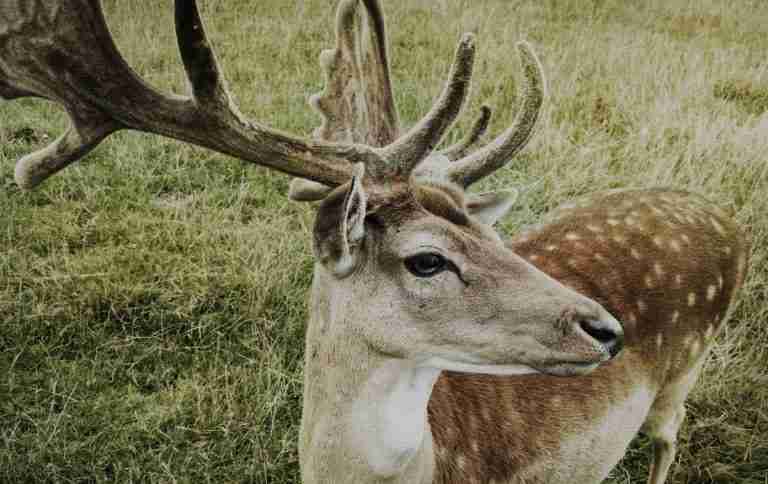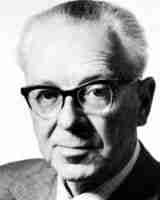This is a box. This is your mind in a box. Many people’s minds never leave the box. Why? Thinking creatively is something we all do naturally. It’s our instinctive and ordinary way of being. To be creative is nothing less than being human. You can’t help but be creative. But back to the box. Why? Why do we tend to stay within our capacity, within our own perception of what’s possible, within a dull dark lifeless box?
Simply put, it’s difficult to escape the box that is the accepted social norm, the seemingly permanent reality of things. While being creative is our natural state, perhaps going against the grain is not. Let’s view this idea from a biological standpoint.
If you’re a deer and you suddenly notice each and every one of your deer friends frantically charging in a particular direction, you best join the herd or chance getting consumed by a ferocious hungry lion. Join the herd or get eaten. Hmmmm. I think I’ll chill and eat some more grass…ummm NO!! I don’t think so. I’ll join the herd and try to blend in best I can. My survival depends on it.
Our pre-programmed biological tendencies pervade every part of our life from how we think to how we interact with others. In terms of interacting with others, we have a desire to be accepted. A desire to fit in. To fit in it’s only natural that we act accordingly with what others are doing. In the interest of fitting in, there’s no benefit to being different or to escaping the ways of others.
Be like everyone else, do what they do, follow the pack. Those are your keys to survival.
But we’re humans, not deer. Are we truly governed by the same attitudes and outlooks by something that freezes in headlights and has a pea-size brain? You tell me.
How to Be More Creative Than A Deer
Focus your creativity
We are not deer. And although I haven’t chatted with any deer lately, I’m going to go out on a limb here and say that we have the capacity to be more creative than your average doe. But, just because we have the capacity doesn’t mean that we’re all doing our best to utilize it.
We do tend to follow the pack and we do desire to fit in. These traits cause us to avoid using our own creativity, keeping us inside our box, inside our comfort zone where we know we will be accepted by our peers and teachers. We may believe that we must learn the tunes that everyone else says we must learn…or we must transcribe the players that everyone else says we must transcribe…or we must learn from the books that everyone else says we must learn from.
In jazz education as a whole, the body of tunes you are expected to know is becoming more and more formalized. The players that you’re supposed to study has practically become a formula. What happened to using our own minds to determine what we enjoy, what we want to sound like, what tunes or players we wish to study?
Teachers put these resources together to help you, not to hinder you. They say to learn specific tunes or transcribe certain players because they’re trying to guide you in the right direction. You can’t stop there or think that their route will get you exactly where you want to go. Use everything as a springboard for your own understanding. Don’t be a deer.
Do not let these basic animal traits of following the pack or fitting in stifle your own creative endeavors.
Besides having a much larger brain than a deer, you can direct your creativity energy wherever you desire. Learn to harness it and focus it. Channel your creativity and allow it to express itself in new and exciting ways.
This creativity can spill over to all parts of your life and it’s exactly this overflow of creativity that will help you be a more creative musician.
Think for a moment. What other areas of your life would you like to be more creative in? Perhaps you draw, or you want to broaden the types of books you read, or maybe you want to change up your workout routine in a different manner.
The opportunities to apply creativity in your life are endless. Keep an eye out for them and you’ll start to realize how they’re everywhere.
But how can we be more creative if we don’t even know what creativity is?
Be a combinatorial master
“Creativity is the power to connect the seemingly unconnected.” -William Plomer
Dwell on this quote for several minutes. Take seemingly unconnected things and connect them to form a new whole. Perhaps being creative isn’t as difficult as you thought? Of course it’s not that clear cut and dry, but this forming a connection between things that people thought were unrelated is a huge part of being creative.
When viewing creativity in this light, it really doesn’t seem that hard. For example, take a line you just transcribed and take a concept you’ve been working on. I bet you can guess what the next step is. Combine them! That’s it. Simple enough right?
Want even simpler? Take two lines you recently transcribed. Take a piece from one and combine it with a piece from another. Voila! New line. But why stop there? Now take that new line and apply that concept you’ve been working on to that new line. In just these few simple steps there’s limitless possibility for you to be creative.
You could combine small units of the two lines, experimenting with what sounds best to create your new line. You could then be selective about how and where you apply the concept you’ve been working on to the line.
Choose a small amount of information as I did in this example (two lines and a concept) and experiment with how you can combine them. The better the result sounds, the more successful you’ve been about applying your creativity.
This is just the beginning. You can combine anything you want. Coltrane combined concepts from other genres outside of jazz with his musical vocabulary to create a completely unique whole. Understand that the individual parts that anyone combines are not really unique; they come from somewhere. But when combined, they form something new. How you combine them is creativity.
Old thing. New way.
A similar and nearly analogous idea is doing an old thing in a new way. You hear this in the bulk of great musicians today. They study their favorite musicians of the past so much that at one point in their development, they sounded nearly identical to some of their heroes.
Then, they consciously or unconsciously apply a new twist to this older way of playing. This new twist may be a combination of other things they had learned or it could be something that just seemed to pop out of their head, as if it came to them in a dream. But with the new twist, this old thing transforms into a new thing.
Taking on a new perspective
Another way to invoke your creative juices: imagine the perspective of a seemingly unrelated person or creature to whatever it is you’re doing. For example, imagine the perspective of The Godfather playing jazz. Creative film directors do this all the time. Take for instance the David Lynch film Mulholland Drive, where one woman’s perspective creates an artful masterpiece from a typical storyline of jealousy, murder, and corruption.
Imagining from others’ perspectives opens your mind to possibilities that never existed before. Again, the better the result sounds to you is your measure for your success of how well you applied your creativity.
Be better than the deer
“I have never made the slightest effort to compose anything original. There is not a famous master whose music I have not studied through many times.” -Wolfgang Amadeus Mozart
The most important part about being creative is to deeply explore without fear of unoriginality. The more you explore, the more you have to draw from, and the more connections of seemingly unrelated things you can make.
You can break free from the self-imposed limits of your own creativity, the box around your mind telling you to follow the herd and to fit in. With a little effort and focused energy, you can be more creative than a deer.












